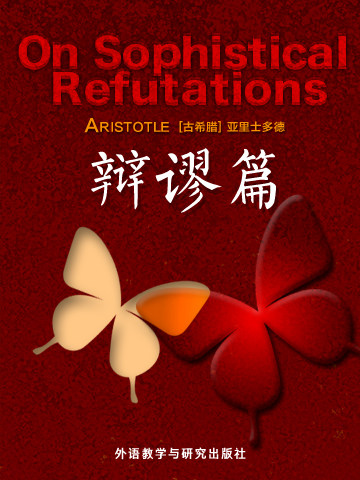人如何用诡辩术给自己的所作所为找借口?来看看这种神奇的文字游戏。
《辩谬篇》一部对逻辑具体剖析的书籍。主要就是讲的人会用诡辩术给自己的所作所为找到借口,但是这些借口往往都是不能成立的,只是这些人运用自己的说辞玩的文字游戏而已,比如书中作者提到了这么一个故事:你有一条狗,它是有儿女的,因而它是一个父亲;它是你的,因而它是你的父亲;你打它,就是打你自己的父亲。
On Sophistical Refutations is a text in Aristotle's Organon in which he identified thirteen fallacies
- Book I 1
- BOOK I 2
- BOOK I 3
- BOOK I 4
- BOOK I 5
- BOOK I 6
- BOOK I 7
- BOOK I 7
- BOOK I 9
- BOOK I 10
- BOOK I 11
- BOOK I 12
- BOOK I 13
- BOOK I 14
- BOOK I 15
- BOOK I 16
- BOOK I 17
- BOOK I 18
- BOOK I 19
- BOOK I 20
- BOOK I 21
- BOOK I 22
- BOOK I 23
- BOOK I 24
- BOOK I 25
- BOOK I 26
- BOOK I 27
- BOOK I 28
- BOOK I 29
- BOOK I 30
- BOOK I 31
- BOOK I 32
- BOOK I 33
- BOOK I 34
- 书评 写书评
- 笔记
-
书评加载中...























 京公网安备 11010802032529号
京公网安备 11010802032529号
笔记加载中...